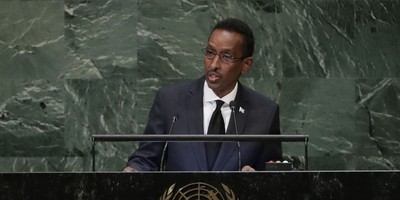It has become fashionable to compare our present economic crisis to the Great Depression, especially by partisan opponents of the Bush Administration. The comparison may turn out to be apt, though not for the reasons that these critics believe.
In both the early 1930s and today, the Republican president responded to a severe financial shock with extraordinary interventions into the marketplace. That’s right, the “do-nothing” Herbert Hoover was no proponent of free markets, despite what you learned in history class. Hoover thought the proper response to an economic downturn was to spend massively on public works, and to support crop prices and wage rates. (See Andrew Wilson’s recent Wall Street Journal op ed.) Another similarity between the 1930s and the present, is that the unpopular Republican was replaced by a charismatic Democratic leader, who was unafraid to double-down on his predecessor’s interference with markets.
So far Barack Obama has not pledged the top-down central planning that characterized the New Deal, but he will be sworn in with the banking sector already partially nationalized, and a very weak economy on his hands. Given his promises to unions, his pledges to “fix” health care and education, his desire to wean the country from cheap energy, not to mention his casual dismissal of private property rights, a Newer Deal is entirely possible.
If a true economic disaster occurs, it will probably unfold along these lines: The economy sinks deeper into recession, causing home prices to tank even more. This translates into hundreds of billions in losses for the Treasury, which—thanks to its seizure of Fannie and Freddie, as well as the $700 billion bailout—has exposed itself to the fortunes of the real estate market. When combined with another major “stimulus” package, as well as a shrinking tax base, the government faces a budget deficit exceeding $1 trillion. Note that the September CBO estimate [pdf] already had the FY 2009 deficit pegged at $438 billion, and that figure doesn’t reflect the bailout or another possible round of rebate checks.
Recommended
Besides record-breaking deficits, we might also enjoy double-digit price inflation by the summer. In an attempt to end the “credit crunch,” Fed Chairman Bernanke has recently allowed the monetary base to grow at a truly jaw-dropping pace, as the Fed’s own chart makes crystal clear.
Chairman Bernanke is aware of the danger of massive inflation, and in fact many of his critics have accused him of pumping in new reserves much too slowly. There is still time for him to reverse the process and drain away the excess, just as the Fed did after it had briefly flooded the market leading up to the Y2K scare. However, Bernanke may be in a very difficult position if the credit markets are still on life support from the Fed once prices begin rising rapidly. He may find in a few months that his efforts to rescue the banking sector have pushed him into a corner, where he must choose double-digit inflation or collapsing banks.
The scenario described above would be difficult terrain for any administration. But with a President Obama and a solid Democratic Congress, the federal “solutions” will only multiply the pain. We can easily imagine the new president denouncing greedy profiteers for the soaring prices of milk, bread, and gasoline, and to impose “anti-gouging” penalties, if not outright price controls. This in turn would lead to shortages and long lines, as in the 1970s and even more recently when several state Attorneys General threatened retailers not to raise gasoline prices in the wake of Hurricane Ike.
Naturally, I have painted only one possible chain of events. We may very well limp along and eventually recover after a moderate recession. Yet it should concern citizens that the federal government has already resurrected several plays from the New Deal handbook. The last time we tried this, we had a decade of stagnation and massive unemployment. It’s very possible that the experiment is about to be repeated.

























Join the conversation as a VIP Member